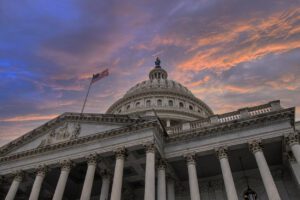With the Biden-Harris administration’s recent announcement about student loan forgiveness, some borrowers are left with questions. You may wonder, “If student loans are forgiven, will I get a refund?” or “Is there a student loan overpayment refund available?”
While getting a refund on past student loan payments might not seem possible, some relief may be available for borrowers who made payments during pandemic-related forbearance. To recap, the U.S. government implemented an emergency federal student loan payment pause on March 13, 2020, if student loan forgiveness does not get approved the end of the student loan payment pause will be 60 days after June 30, 2023. Interest rates on federal student loans also dropped to 0%, so some borrowers used that time to get ahead on their student loan principal payments.
How does this federal student loan rebate work?
Those who made payments during these 33 months of forbearance could get those payments refunded, according to the Federal Student Aid office. While not much information is available on how to get payments refunded, the Federal Student Aid office suggests contacting your loan servicer to start the process. So if you continue your monthly payments during the emergency payment pause, you might be eligible for a refund.
Why would you want a student loan refund?
You may be wondering why you’d want a refund for payments you continued making during the pandemic. After all, wouldn’t your student loan balance just increase again if you got that amount refunded? The situation is slightly more complicated than that because of the government’s new student loan forgiveness program. But it could end up working out in your favor. Here’s how.
Let’s say you made $7,000 worth of federal student loan payments during the emergency payment pause, with the goal of getting ahead on your principal while the interest rate was locked at 0%. Now, your remaining student loan balance is $2,000. If you qualify for a refund on the $7,000, your new loan balance would be $9,000. Back to the drawing board, right? Wrong.
Under the new student loan forgiveness plan, up to $10,000 worth of federal student loans or $20,000 worth of Pell grants are eligible for forgiveness. This means if you were to get a payment refund, it’s possible you could get your $9,000 balance forgiven, assuming you qualify. Your income can’t exceed $125,000 as an individual or $250,000 for married couples to be eligible for loan forgiveness.
Wouldn’t it be nice to get $9,000 forgiven instead of just your current $2,000 balance? It would be like adding $7,000 worth of student loan payments back into your bank account, a big potential advantage for borrowers who continued making payments during forbearance.
Despite this big potential advantage, some experts warn that the government could still change how payments during the emergency forbearance period are handled. These changes could impact whether or not these payments are eligible for forgiveness, but this remains to be seen.
Bottom Line
Borrowers who continued repaying their student loans during the pandemic could qualify for a refund and potentially get their remaining student loan balance forgiven. However, it’s possible the government could change how payments made during the pandemic are handled. If you’re interested in getting your pandemic payments refunded, talk with your student loan servicer about your options. You may also want to speak with a financial professional about whether or not this path makes sense.



